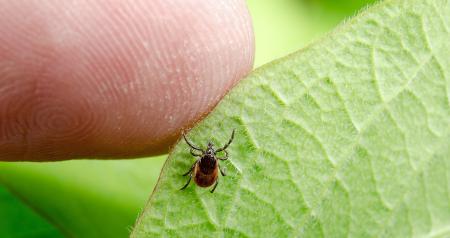Treating Lyme disease with stem cells
The increase in Lyme disease cases during the last decade has prompted its classification as an "emerging" infectious disease. The bacterium Borrelia Burgdorferi from an infected deer tick is believed to be the main cause of Lyme Disease.
Individuals affected by "chronic Lyme Disease" or "Post-treatment Lyme Disease Syndrome" are facing three main concerns:
- A chronic infection very likely due to either cystic encapsulation of the initial pathogen or its growth in the form of biofilms, which cannot be treated with conventional antibiotic therapy.
- An accumulation of toxins due to a compromised immune system and the regular use of oral antibiotics and/or intravenous antibiotics, antidepressants, and other drugs.
- Slow degradation of physical function leading to arthritis, heart problems, muscle pain and neurological problems affecting the brain and the nervous system. Common symptoms of the disease can persist for months or years after regular antibiotic treatment. They may include muscle aches, joint pain, nerve pain, neurological symptoms and chronic fatigue syndrome. Approximately 10 to 20 percent of people who are treated with the recommended antibiotics will have disease symptoms that persist after they complete treatment according to the New England Journal of Medicine. For this reason, many people with this tick-borne disease seek alternative therapies.
Regenerative stem cell therapy for Lyme disease
A safe and effective way to help restore the health and quality of life of those with this degenerative disease is to address the three aspects of the disease in parallel. Natural antibiotic therapies and detoxification protocols for bacterium, biofilms, and heavy metals are used in conjunction with regenerative medicine in the form of pluripotent stem cell therapy as an effective treatment against the disease.

Lyme disease Treatment Plan
Our treatment plans generally last between 2 and 5 weeks, depending on your overall health, your condition, and the severity of your Lyme disease symptoms. Anyone can sign up for stem cell treatment for Lyme disease. Each stem cell treatment candidate will receive a tailored plan to help achieve the highest success rate for maximum therapy efficiency. Typically, stem cell therapy for Lyme disease will resemble a program such as the one below, and will last for 4 weeks.

Stem cells
24 Stem cell IV’s

Anti-bacterial
24 Day anti-bacterial treatment

Peptides & Nutraceuticals
10 IVs

Ozone
4 sessions
Treatments
- Anti-Aging
- Alzheimer's disease
- Arthritis
- Back Pain
- Brain Injury
- Cerebral Palsy
- COPD
- Diabetes
- Fibromyalgia
- Heart disease
- Knees
- Guillain Barré Syndrome
- Lyme disease
- Multiple Sclerosis
- Neck Pain
- Nerve Damage
- Neuropathy
- Opioid Addiction
- Pain Management
- Parkinson's disease
- Post-Viral Syndrome
- Pulminary Fibrosis
- Rheumatoid Arthritis
- Scleroderma
- Shoulder Pain
- Facelift
- Stroke
- Treated by Stem Cells

Benefits of stem cell therapy for Lyme disease patients
Because we utilize a type of stem cell type that is cultured in our laboratory, rather than using mesenchymal stem cells (adult stem cells) coming from the patient's bone marrow or adipose tissue, we completely avoid the potential risks associated with invasive cell-removal procedures.
Pluripotent stem cell injections are a safe treatment that have the immediate effect of strengthening the immune system. Considerable improvement is also observed in the joint inflammation within four weeks of the treatment. Chronic Lyme disease patients who receive stem cell therapy may also experience improvement in energy levels, strength, motivation, and balance during that period of time.
-
Immune Response
The first benefit from the stem cell treatments is an improvement in immune deficiencies - an increased capacity of the body to defend itself from the pathogen invasion.
-
Organ Repair
The second level of improvement in the Lyme disease patient receiving stem cell treatment is usually observed after a minimum of 3 injections when the diseased tissue, and different organs that have been damaged by the disease start to show signs of repair. Pluripotent stem cells are especially efficient at reversing brain neurological problems.
-
Stop anti-depressants
Lyme disease patients on anti-depressants were able to cease taking them when entering the 4th week after the treatment. Some showed improvements a little later but most patients show remarkable improvement in symptoms of the neurological kind.
-
Reduced Inflammation
Clinical improvement is also observed in the joint inflammation, reducing chronic pain within 4 weeks of the "alternative treatments" using stem cells.
Frequently Asked Questions
-
Can pluripotent stem cells cure lyme disease?
Our goal with pluripotent stem cell therapy is to effectively repair the damage caused by Lyme disease and help your body reverse the condition's effects. While we focus on outcomes rather than the word "cure," this therapy is the leading treatment available today for addressing the complex symptoms of Lyme disease.
Pluripotent stem cells work by helping to regulate your body's immune response, which is a critical step in halting the disease's progression. From there, the therapy focuses on repairing the nervous system to help remove sensitivities to light and noise, restore mental clarity, and bring back a sense of well-being. As our patients' bodies heal and their symptoms improve, we find that the issues related to Lyme disease are systematically resolved.
-
Will my lyme disease symptoms go away after stem cell therapy?
Yes, the primary goal of our stem cell therapy is to resolve the symptoms of Lyme disease. Patients suffering from chronic fatigue, persistent infections, joint pain, fibromyalgia, brain fog, and nerve problems have found significant relief through our treatments.
The therapy is specifically designed to repair the nervous system and restore balance, leading to the elimination of symptoms. While every patient's healing journey is unique, the improvements are designed to be stable and long-lasting. The healing process doesn't stop when you leave our clinic; it continues for three to six months as your body uses the new stem cells to regenerate, leading to progressively greater improvements over time.
-
What are the other treatments for lyme disease?
Our approach is comprehensive. While traditional antibiotics can fight the Lyme bacteria, they often can't repair the lasting damage left behind by the infection. Our treatment protocols combine the regenerative power of pluripotent stem cells with a range of supportive therapies to promote whole-body healing.
-
What can I expect during a typical lyme disease stem cell treatment program?
Your treatment program at Stemaid Institute is a comprehensive and personalized healing experience. Here is what you can typically expect:
Duration: Most programs last from three to five weeks, depending on the severity of your condition. We will recommend the appropriate length for you, whether you are newly diagnosed or have been living with severe, long-term symptoms.
Daily Schedule: Your treatment takes place six days a week in our clinic, ensuring a consistent and intensive therapeutic process.
Your Comprehensive Treatment Includes:
In-Depth Medical Supervision: You will have a complete medical assessment, regular visits with our doctors, and full blood panels at the beginning and end of your treatment.
Daily Pluripotent Stem Cell (PSC) IVs: You will receive daily infusions of fresh, powerful pluripotent stem cells, which are programmed to read your body’s needs and initiate healing.
Plurisomes™ (Targeted Healing Messengers): These are powerful derivatives of our stem cells that are delivered through IVs or targeted injections to accelerate healing where it's needed most.
Supportive Therapies: Your program includes weekly advanced ozone therapy, daily nutritional IVs, therapeutic massage, and other wellness treatments to support your recovery.
Comfort and Hospitality: We provide a gourmet organic lunch each day, along with healthy snacks and teas. We also arrange for transportation to and from the airport and your daily clinic visits to make your stay as stress-free as possible.
During and After Treatment: It’s common to feel tired after your daily stem cell administration; this is a positive sign that your body is directing its energy toward healing. This feeling can last for a few weeks. The most important thing to remember is that your body will continue to heal and improve for up to six months after you complete your program.
References and Literature
1. Lyme disease treatment | CDC
2. Transplantation of Human Embryonic Stem Cells in Patients with Multiple Sclerosis and Lyme Disease
3. Improvement of common variable immunodeficiency using embryonic stem cell therapy in a patient with lyme disease: a clinical case report
4. Single-photon emission tomography imaging in patients with Lyme disease treated with human embryonic stem cells
5. Treatment of Lyme Disease with Human Embryonic Stem Cells: A Case Series | OMICS International | Abstract
6. Induction of pluripotent stem cells from mouse embryonic and adult fibroblast cultures by defined factors - PubMed
7. Reprogramming to recover youthful epigenetic information and restore vision - PubMed
8. In vivo partial reprogramming alters age-associated molecular changes during physiological aging in mice - Nature Aging
9. Transient non-integrative expression of nuclear reprogramming factors promotes multifaceted amelioration of aging in human cells
10. Lyme Disease Treatment & Management: Approach Considerations, Treatment of Early Lyme Disease, Lyme Arthritis
11. Time for a Different Approach to Lyme Disease and Long-Term Symptoms | NEJM


